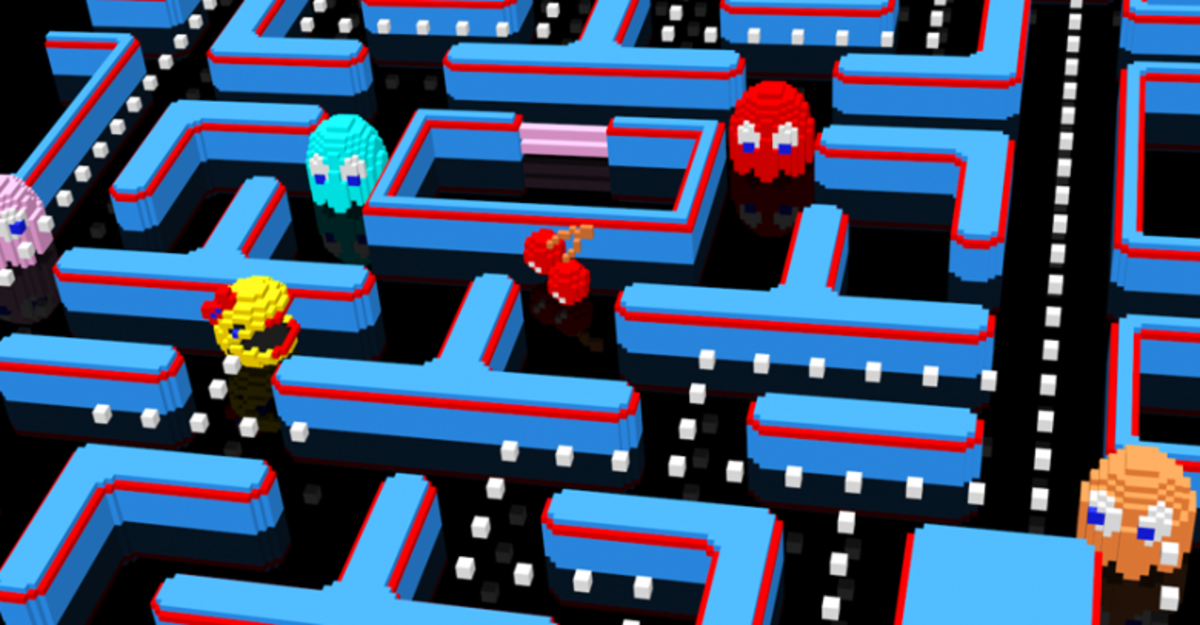
But the glitch is always flowing upward, chasing the player through an infinite, randomly-generated labyrinth. Munching dots in succession adds to the player’s score power-pellets still turn ghosts an edible blue. But here the maze is endless ghosts are smarter, and a special mode that costs credits adds powerful weapons like lasers, bombs, and tornadoes. The player controls the titular yellow circle with swipes in four cardinal directions, just as she moved the joystick in 1980. In Pac-Man 256, the glitch is now a dark wave of broken code that slowly takes over the maze. Reaching Level 256 would cause the screen to fill with random numbers and colors, the code turning in on itself colloquially, this is known as a “kill screen.” Due to hardware limitations, players could only get to Level 255.

The mobile game takes a glitch from the original arcade game and makes it sentient. Pac-Man 256 came out on August 19, quickly peaking to #1 in Japan. The next five months saw Sum and Matt Hall continue to tweak and polish the design, while 3 Sprockets handled the programming and Bandai Namco Vancouver headed up the Marketing and Publishing duties. Hipster Whale (with help from fellow Melbourne-based developers 3 Sprockets) mocked up a prototype to show Bandai Namco at the Game Developers Conference (GDC) in March of this year. The idea? Make the next Pac-Man game for mobile. “Bandai Namco’s was one of the strongest.” Soon after Crossy Road’s launch, the team opened an email from one of the oldest game developers in the industry. “We heard from a lot of companies,” Sum says. In the span of a calendar year, a small team from Australia became one of the most sought-after mobile developers in the world. By mid-August 2015, Crossy Road was downloaded over 100 million times across all platforms.


What happened resembles the unrealistic plot of a power-fantasy young adult novel: their little game became a phenomenon. “When we made Crossy Road, we knew we had a good game and we thought it was a lot of fun, but it just really took off more than we thought.” “We definitely didn’t expect any of this to happen,” Sum told me over the phone.

When Matt Hall and Andy Sum of Hipster Whale released their Frogger-inspired mobile game Crossy Road last November, their expectations were realistic. Until one considers that Pac-Man 256 is a touch-based mobile game made by a small independent studio from Melbourne, Australia. This past August, the latest version of Pac-Man reached #1 on the charts in Japan. This article is part of a collaboration with iQ by Intel.


 0 kommentar(er)
0 kommentar(er)
